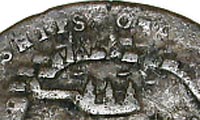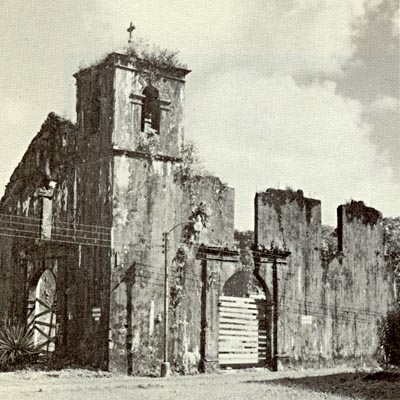| Obverse Design | Legend curving above says "ADMIRAL VERNON AND COMMODORE BROWN". There is no inside line enclosing the legend. Hip length (1/2 length) figure of Brown is on our left and Vernon on our right. Brown is profile right. Vernon is 1/2 left, facing 3/4 left. Both are holding batons. Brown's head is beneath the space between "ADMIRAL" and "VERNON". Vernon's head is beneath the "OM" of "COMMODRE". In exergue (under a line along the bottom of the medal) it says "TOOK PORTO" and "BELLO" in two lines. | ||||
| Reverse Design | Legend curving along the top says "WITH : SIX : SHIPS : ONLY : NOV : 22 : 1739". The stops are four dots in a diamond pattern. There is no inside line enclosing the legend. The center is the attack on Portobello. The six ships are lined up one, two and three. The first three are sailing diagonally right, and the other three are sailing diagonally left. All the ships have three masts. Three boats are in the harbor between the mole and the town. A shaft points between the letters "P" and "S", and a steeple between the letters "N" and "L". There are water lines in the harbor. | ||||
| Distinctions | There are about 31 similar varieties with Brown and Vernon. Of those, about 27 involve 1/2 length Brown and Vernon's facing each other holding batons. However, only two have "TOOK PORTO BELLO" in exergue on the obverse. This one does not have an exergue section on the reverse; the other similar variety says "GOD PRESERVE THE ENGLISH FLEET" in exergue on the reverse. | ||||
| Detail On Obverse of VN-2.280 | Detail On Reverse of VN-2.280 | ||||
 Note the "TOOK PORTO BELLO" in exergue. |
 Note the spire at "PS". The steeple at "NL" is harder to make out. Also note the three boats in the harbor. |
||||
| Metal | Brass and copper. | Weight | Unknown. | Size and Shape | Round, 37.5 mm in diameter. |
| Rarity | Common. | Designer or Issuer | Not known. | Other Catalog Numbers | Betts #266, McCormick-Goodhart #143. |
| Notes | Shown below are the ruins of the old San Felipe Church in Portobello. I do not have dates for this building, but it may well have been built before 1739 and be one of the spires portrayed on the reverse of many Admiral Vernon medals. | ||||

From the Canal Zone Review, Fall 1971 Edition